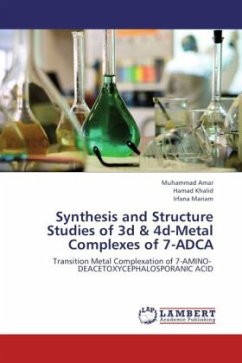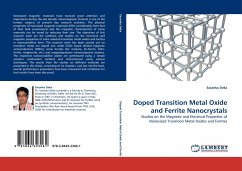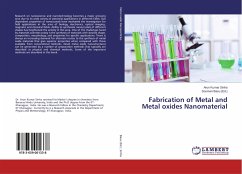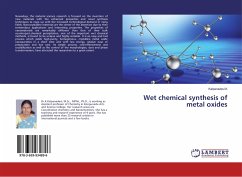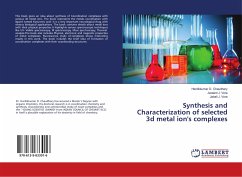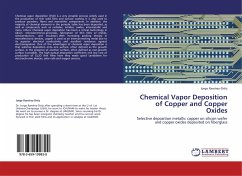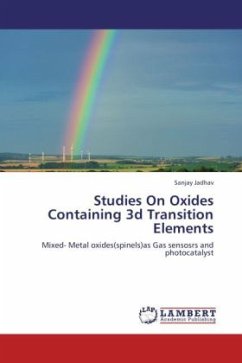
Studies On Oxides Containing 3d Transition Elements
Mixed- Metal oxides(spinels)as Gas sensosrs and photocatalyst
Versandkostenfrei!
Versandfertig in 6-10 Tagen
52,99 €
inkl. MwSt.

PAYBACK Punkte
26 °P sammeln!
The gas sensing mechanism is based on conductance of the ferrites. The oxygen adsorbed on the surface of the material influences conductance of the ferrite. The amount of oxygen on the surface of the material depends on the particle size, specific area and operating temperature of the sensor. The interaction between the sensing material and gas to be detected determines the gas response. Generally, photocatalytic degradation of organic compounds includes various processes. An electron is excited from the valence band to the conduction band (CB) of metal oxides by absorption of light with energ...
The gas sensing mechanism is based on conductance of the ferrites. The oxygen adsorbed on the surface of the material influences conductance of the ferrite. The amount of oxygen on the surface of the material depends on the particle size, specific area and operating temperature of the sensor. The interaction between the sensing material and gas to be detected determines the gas response. Generally, photocatalytic degradation of organic compounds includes various processes. An electron is excited from the valence band to the conduction band (CB) of metal oxides by absorption of light with energy equal to or greater than the band gap of the semiconductor. The separated photoinduced electrons and holes transfer to the semiconductor surface efficiently. At the surface, electrons react with acceptors (usually O2 dissolved in the solution) to produce oxidant species, for example hydroxyl radicals. Meanwhile, holes react with donors (H2O, OH ) to produce oxidant species. Oxidant speciesproduced from electrons and holes have strong oxidizing abilities and can directly oxidize organic compounds into CO2 and H2O.



